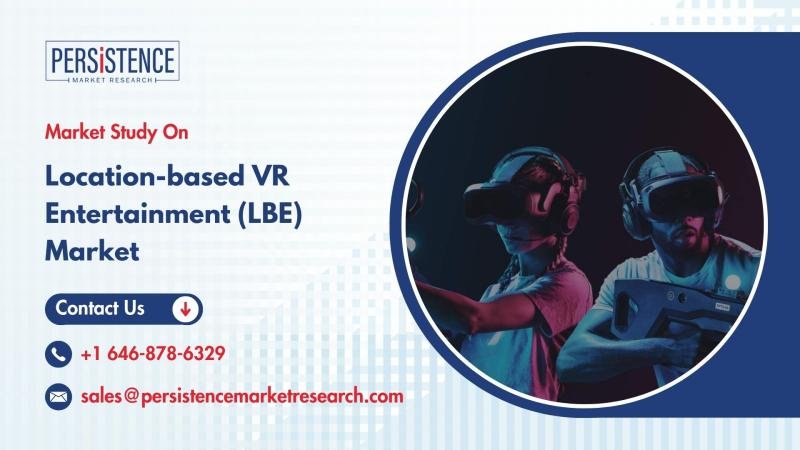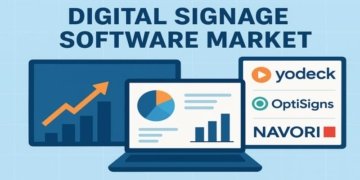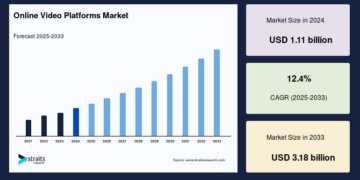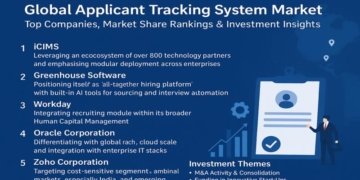✅Overview of the Location-based VR Entertainment (LBE) Market
The location-based virtual reality (LBE) entertainment market is poised for remarkable growth over the coming decade. According to Persistence Market Research, the global market size is projected to expand from US$ 3,971.2 Mn in 2025 to US$ 20,471.6 Mn by 2032, reflecting a robust CAGR of 26.4% during the forecast period. This surge is largely attributed to the increasing consumer appetite for immersive, interactive entertainment experiences that transcend the limitations of traditional gaming or movie formats. With the fusion of high-end hardware, real-time simulation, and storytelling, LBE is redefining entertainment across arcades, theme parks, and dedicated VR arenas.
The hardware segment-including head-mounted displays, sensors, and advanced cameras-currently leads the market in terms of revenue. Its dominance is fueled by rapid technological advancements and the increasing affordability of VR components. North America stands out as the leading regional market, driven by early adoption of immersive tech, the presence of major players like Oculus and Zero Latency VR, and a tech-savvy consumer base. Additionally, rising investments in themed entertainment destinations across the U.S. are further bolstering growth.
Get a Sample PDF Brochure of the Report (Use Corporate Email ID for a Quick Response): https://www.persistencemarketresearch.com/samples/31820
✅Key Highlights from the Report:
➤ The LBE market is projected to grow at a CAGR of 26.4% between 2025 and 2032.
➤ North America is the dominant regional market due to its strong tech ecosystem and infrastructure.
➤ Hardware is the largest revenue-contributing component segment, led by demand for advanced HMDs and sensors.
➤ Theme parks and arcade studios are major end-user verticals boosting market penetration.
➤ The 3D technology segment leads the innovation race, followed closely by cloud-merged reality.
➤ VR studios and startups are rapidly expanding through cross-platform collaborations and IP licensing.
✅Market Segmentation: Exploring the Key Components
The location-based VR entertainment market is segmented across multiple dimensions including component, technology, and end-user. In terms of components, the market is divided into hardware, software, and services. Hardware takes the lion’s share, with head-mount displays, head-up displays, sensors, and VR cameras being essential to delivering immersive experiences. On the software side, custom VR applications, gaming engines, and control interfaces drive the interactivity layer. Services like maintenance, installation, and content updates also play a supporting but growing role in sustaining operational efficiency.
From a technology standpoint, the market is broadly classified into 2D, 3D, and cloud-merged reality. While 2D VR experiences are gradually becoming obsolete, 3D and cloud-merged reality are setting the new standard. The enhanced realism and engagement offered by 3D VR experiences are attracting not only gamers but also storytellers, film producers, and even educators. Cloud-merged reality, a cutting-edge approach that integrates cloud computing with immersive VR, is emerging as a game-changer, enabling real-time updates, multiplayer interactions, and larger-scale simulations with minimal hardware load.
✅Regional Insights: Global Trends in Location-Based VR
In terms of regional performance, North America continues to dominate the location-based VR entertainment market, accounting for a significant share of the global revenue. The region’s leadership stems from its robust tech infrastructure, a thriving gaming culture, and the presence of major VR players such as Oculus (Meta), Survios, and The VOID. Additionally, increasing investments in entertainment venues and tech-centric tourism hubs further support the region’s growth trajectory.
Meanwhile, Asia Pacific-particularly China, Japan, and South Korea-is emerging as the fastest-growing regional market. The region benefits from a younger demographic eager to engage with emerging tech, a growing base of VR startups, and supportive government policies promoting immersive media and digital entertainment. Countries like Japan are leveraging LBE experiences to enhance cultural exhibits, while China is integrating VR attractions into massive amusement complexes.
✅Market Drivers
One of the primary drivers of growth in the LBE VR market is the increasing consumer demand for experiential entertainment. As audiences seek more active roles in their leisure activities, traditional passive entertainment is being replaced by interactive formats that allow users to “step into the story.” This trend aligns with the broader consumer shift toward immersive experiences in retail, education, and hospitality.
Another significant driver is technological innovation, particularly in hardware and content development. Advancements in haptics, motion tracking, and cloud rendering are making VR experiences more realistic and accessible. Additionally, partnerships between hardware manufacturers and content creators are enriching the LBE ecosystem, bringing high-quality, exclusive content to arcades and theme parks.
✅Market Restraints
Despite its growth, the LBE market faces several challenges. Chief among them is the high cost of infrastructure and maintenance. Setting up a fully functional VR entertainment space requires substantial investment in equipment, physical space, and technical staff. This restricts the market mainly to urban centers and well-funded venues.
Another limitation is user fatigue and physical discomfort. While VR has come a long way in reducing motion sickness and enhancing comfort, extended usage still presents physical challenges for many users. Moreover, concerns about hygiene-especially post-pandemic-pose operational hurdles for shared VR equipment in public spaces.
✅Market Opportunities
The evolving landscape of 5G and cloud computing offers massive opportunities for the LBE market. By minimizing latency and enabling real-time, high-fidelity rendering, these technologies allow for more complex and expansive VR environments. Cloud-merged VR can significantly reduce the cost of hardware, making LBE more scalable and viable for smaller operators.
Additionally, cross-industry collaboration presents a unique avenue for growth. Museums, educational institutions, and retail stores are increasingly adopting LBE setups to attract and engage audiences. These unconventional but high-traffic venues open up untapped markets for VR companies seeking to diversify beyond gaming and entertainment.
For Customized Insights on Segments, Regions, or Competitors, Request Personalized Purchase Options @ https://www.persistencemarketresearch.com/request-customization/31820
✅Frequently Asked Questions (FAQs)
➤ How Big is the Location-based VR Entertainment Market?
➤ Who are the Key Players in the Global Market for Location-based VR Entertainment?
➤ What is the Projected Growth Rate of the Location-based VR Entertainment Market?
➤ What is the Market Forecast for Location-based VR Entertainment for 2032?
➤ Which Region is estimated to dominate the Location-based VR Industry through the Forecast Period?
✅Company Insights
✦ HTC Vive (HTC Corporation)
✦ Oculus VR (Meta)
✦ Hologate
✦ Survios Inc.
✦ The Void LLC
✦ VRstudios Inc.
✦ Zero Latency VR
✦ Exit Reality VR
✦ Positron
✦ Others
✅Recent Market Developments
■ In 2024, Zero Latency VR announced a strategic partnership with Ubisoft to develop exclusive VR content based on popular gaming franchises.
■ VRstudios Inc. launched a modular, portable VR setup in 2025, targeting small- to mid-sized amusement centers and event spaces.
✅Contact Us:
Persistence Market Research
G04 Golden Mile House, Clayponds Lane
Brentford, London, TW8 0GU UK
USA Phone: +1 646-878-6329
UK Phone: +44 203-837-5656
Email: sales@persistencemarketresearch.com
Web: https://www.persistencemarketresearch.com
✅About Persistence Market Research:
At Persistence Market Research, we specialize in creating research studies that serve as strategic tools for driving business growth. Established as a proprietary firm in 2012, we have evolved into a registered company in England and Wales in 2023 under the name Persistence Research & Consultancy Services Ltd. With a solid foundation, we have completed over 3600 custom and syndicate market research projects, and delivered more than 2700 projects for other leading market research companies’ clients.
Our approach combines traditional market research methods with modern tools to offer comprehensive research solutions. With a decade of experience, we pride ourselves on deriving actionable insights from data to help businesses stay ahead of the competition. Our client base spans multinational corporations, leading consulting firms, investment funds, and government departments. A significant portion of our sales comes from repeat clients, a testament to the value and trust we’ve built over the years.
This release was published on openPR.


















